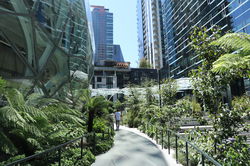 When you travel, everything that's different often stands out. The traveller's gaze is – so to speak, the other way round. And it is shaped by what he/she has known for a long time. The traveller sees the difference and learns from it. In this respect, travel is really educating. In this short travel report I try to record some impressions concerning plants and the plant market that I noticed during a two-week trip I took to the United States in July. I have no claim to objectivity; my research was too superficial for that. But maybe the quick glance sees something that the deeper insight doesn't notice anymore...
When you travel, everything that's different often stands out. The traveller's gaze is – so to speak, the other way round. And it is shaped by what he/she has known for a long time. The traveller sees the difference and learns from it. In this respect, travel is really educating. In this short travel report I try to record some impressions concerning plants and the plant market that I noticed during a two-week trip I took to the United States in July. I have no claim to objectivity; my research was too superficial for that. But maybe the quick glance sees something that the deeper insight doesn't notice anymore...
Cultivate 2019 in Columbus, Ohio
This big plant show in the Midwest that takes place in July has been on my wish list for quite some time – but until this year it never worked out with my travel plans and travel times. This year I was finally able to make it there and I can say that it is the best plant and garden show BtoB I have seen in the United States so far. Although Cultivate is far from the IPM in terms of dimension, the trade show provides a good overview of the American plant market landscape.
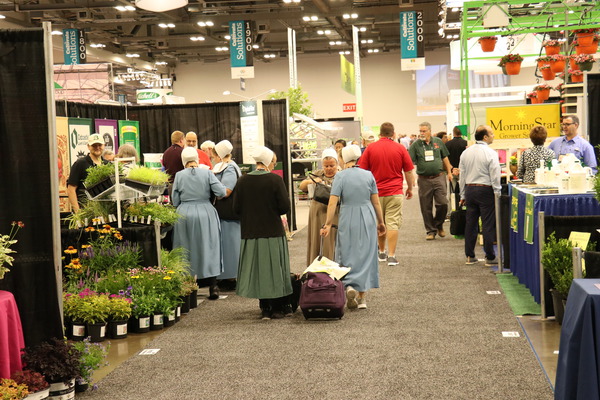
Picture: Exhibition hall of the Cultivate 2019; Amish People are to be seen in large numbers especially on Monday
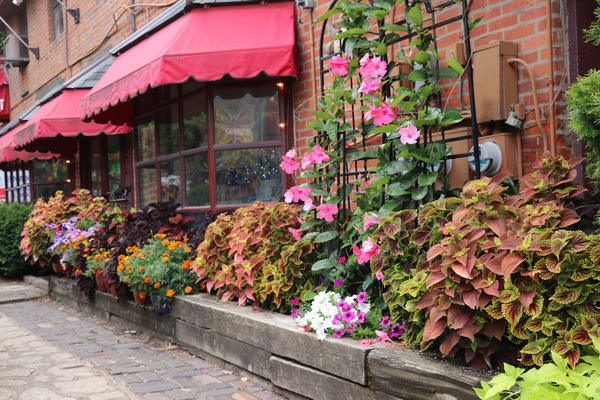
Picture: Columbus itself is not very attractive for a 700 000 Seelenstadt; especially the German Quarter, here also the biggest bookstore of the city, the Book Loft; planting in front of the building
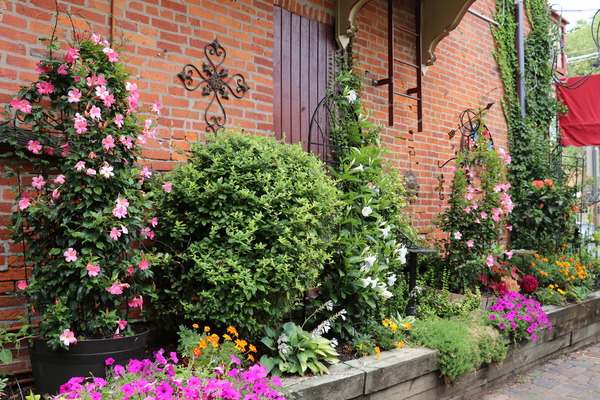
Picture: Planting in the German Quarter in Columbus, Ohio (USA)
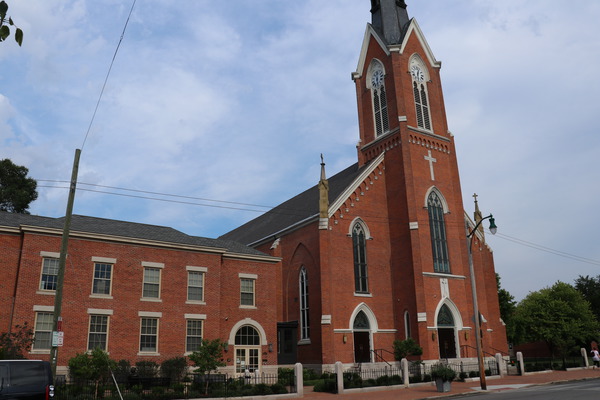
Picture: church in the German Quarter in Columbus, Ohio (USA)
By the way, the simple structure of the huge exhibition hall is also very practical. Its paths are all large and clearly numbered, so that you never lose track of things. Also the targeted search of booths for an appointment or a follow-up is very easy and quickly possible.
The top conference parallel to Cultivate
What I wasn't aware of before my visit and what I only discovered on site was this: parallel to the trade show there is a large conference, so that on four days (Saturday to Tuesday!) several lectures are offered all the time. And to avoid misunderstandings: the lectures are not repeated every day, but each day has its own and different programme – which is very fantastic. The conference has to be paid for separately. Early booking is recommended here, as it is quite expensive on site.
If one were to say that the trade show – spoiled by the IPM – would have been easy to see after one day, in my experience it is not the trade show that is at the heart of the whole event, but the conference. The variety of topics is huge and really comprehensive. This ranges from breeding, new varieties, irrigation and culture to marketing and employee topics; and the quality of the presentations is excellent. Of course, in our small industry there are also speakers who are easy to notice that they also do marketing (for their product, for their service), but that's so obvious and made so clear in advance that it doesn't bother you either; you know what you're hearing. Here is one last observation that I made: I heard the presentation of the marketing director of an online plant seller (Nature Hills) and I was amazed and positively surprised how many insights were revealed. It's also part of American business culture to share what you know relatively openly. If (almost) everyone in the market keeps it that way, everyone and the whole thing can only profit from this...With us Europeans this is rather less imaginable.
The Cultivate trade show is worthwhile for a visitor from Europe: as a plant exhibition only conditionally, but if you have 2-4 days and can hear 3-6 lectures per day between the visits to the booths, then checking out this trade show is highly recommended!
Full garden centres in July
Of course you are full of impressions after such a journey, you don't really know how to help yourself and you also have trouble classifying this diversity. For example – maybe I shouldn't tell you this here... – I noticed that fruit-bearing plants were less visible than three or four years ago. But this could also have something to do with the fact that the BrazelBerry programme was over-distributed in gigantic dimensions at that time and it could be seen at far too many points of sale with far too many plants. This has now “normalised” again and obviously the large nationally active tree nurseries lack the “edible expertise” to a large extent. Neither Monrovia nor Bailey can really score here – only the Star Roses belonging to the Ball Group are present with the newly initiated and, so to speak, newly launched BrazelBerries® range, which is now called Bushel and Berry®... And here is another side impression: it is striking, especially in the northwest of the United States, that in July the edibles often lack our assortment supports such as raspberries or blackberries and also strawberries. Blueberries are always available (but mostly not as branded plants, but from local suppliers), whereas (in our sense) exotic plants are strongly overrepresented, especially in the independent and good garden centres: there are up to 30 varieties of hops (a “must” in Portland), kaki in all shades, feijoa or pineapple guava, mulberries, and even olives in varieties...Nevertheless, there is still something going on with the edibles: the Proven Winners programme with edible plants, which are offered under the banner 'Proven Harvest', is now starting.
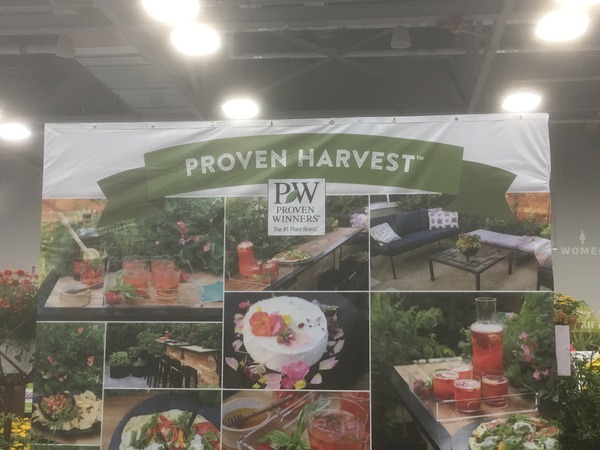
Picture: Proven Harvest series at Proven Winners

Picture: Fruit-bearing plants of the Proven Harvest series at Proven Winners
But the actual insight we gained during the 12 garden centre visits we made is different: all of the garden centres are full to bursting; most of the plants have been bought recently and are of an exceptionally good quality, which you hardly ever see in our local plant industry in this quantity and at this time of year.

Picture: Full garden centre, with large, freshly bought plants
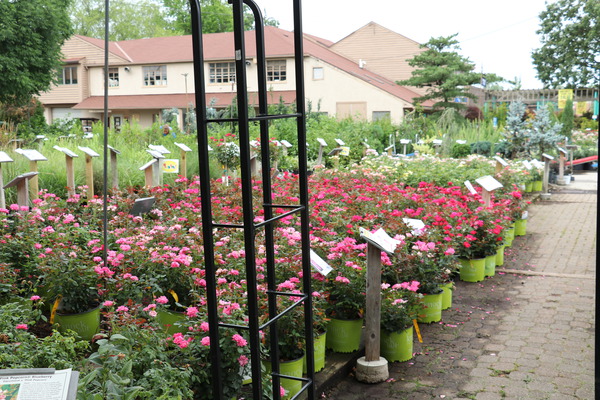
Picture: Roses in giant pots, approx. 15 - 20l
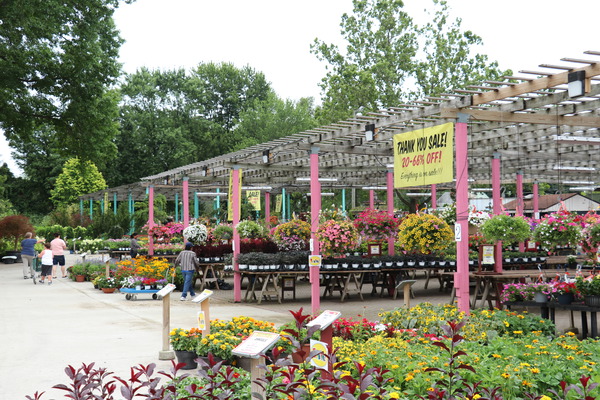
Picture: Summerflor and Hanging Baskets are now sold at a reduced price, but they have recently been bought new and are perfectly maintained. And that's surprising: You can find them in every second shopping cart in July.
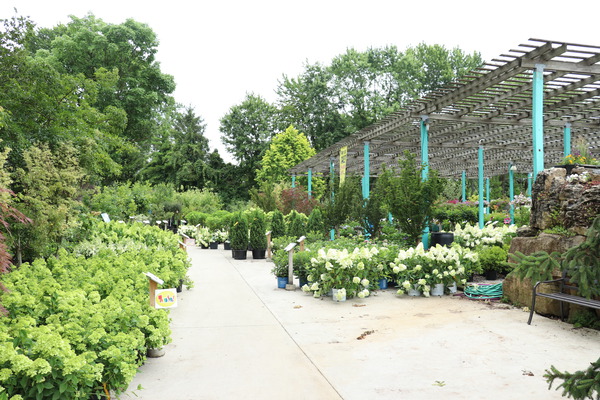
Picture: unavoidable: now Hydr. paniculata, perfect quality, as always also here large pots
Although this is not quite so obvious with the big box stores, with the large home improvement stores (Home Depot, Lowe's), there you can often notice the same damage, care errors and neglect, which are to be found relatively frequently in the summer in our region – nevertheless, the quality is also better here as a rule than with comparable suppliers in Europe (in July).
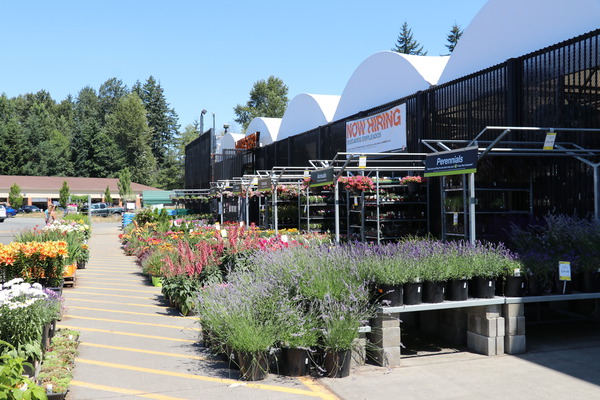
Picture: plant stock at a Home Depot store
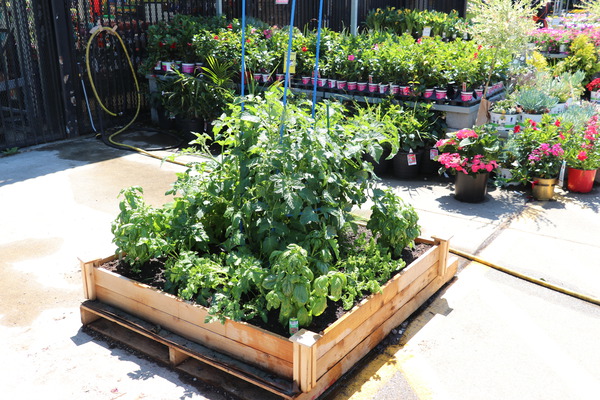
Picture: Planting example of a small vegetable garden at Home Depot
There is certainly one factor that improves the quality of the plants in the store, both in the chains and in the independent garden centres: the large pots. The pot sizes in the American garden centre are certainly 2-3 sizes more voluminous than in Europe (15 L instead of 5 L).
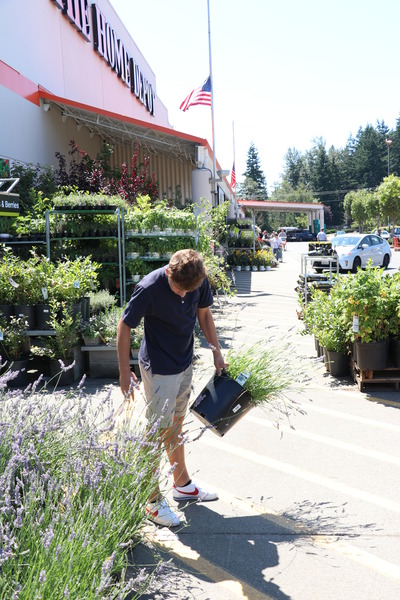
Picture: Everywhere very big pots (for our conditions) - also at Home Depot, as shown here
It would certainly be interesting on occasion to examine and compare the transport costs in Europe and in the United States. Although large tree nurseries usually have different production centres spread over the entire country (East Coast, Southeast, Northwest, California, Midwest) and then also local production centres, these plants still have to cover distances comparable to those in Europe.
Biophilia in the cities
In American trend reports and also in stylish magazines one often reads of a new trend: biophilia. This is nothing more than a love of life. This can be most directly expressed in the relationship between man and plant. According to Erich Fromm (who coined the term), biophilia is defined as follows:
"Biophilia is the passionate love of life and all living things; it is the desire to promote growth, whether it is a human being, a plant, an idea or a social group".
In any case, both online magazines and increasingly the well-known print magazines are full of stories about houseplants, and somehow – at least that was my impression – the plants are recapturing the city: small plant centres and plant boutiques, often somewhat amateurishly furnished, can be found everywhere in the cities and also in the neighbourhoods.
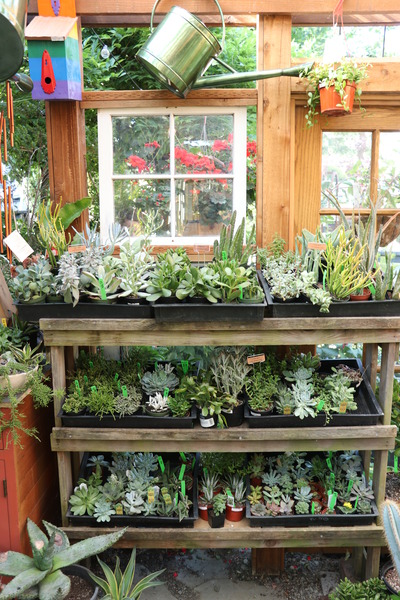
Picture: A small plant centre in Seattle

Picture: Restoring Eden, a small plant center near the airport Tacoma near Seattle, permaculture trials
In Chicago, plants grow not only in the large parks along the shores of Lake Michigan, but also in the gorges of the skyscraper streets.

Picture: Planting of the street canyons of Chicago. By Night
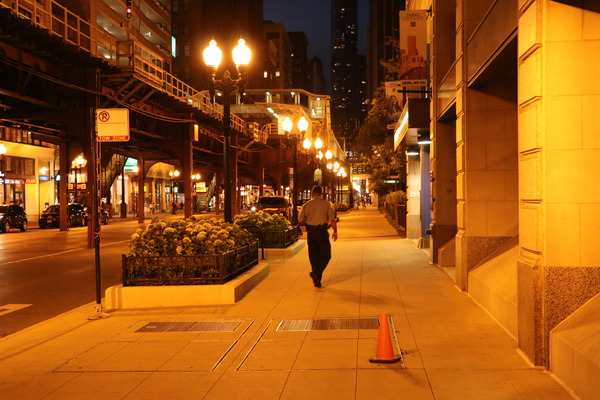
Picture: Plants under the skyscrapers of Chicago
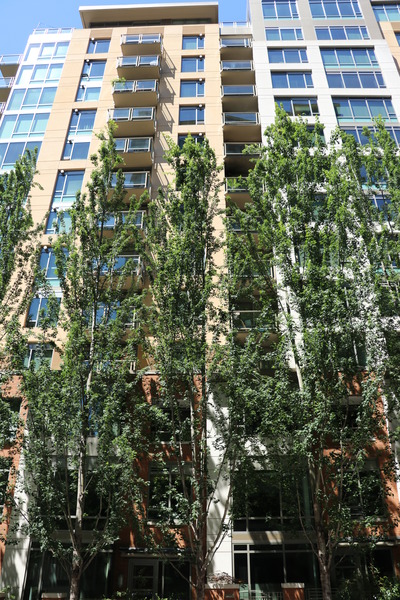
Bild: Seattel: Trees in front of a skyscraper facade
And it also fits the trend that Amazon has built three gigantic spherical greenhouses (called spheres) full of rare tropical and subtropical plants next to its headquarters in Seattle.
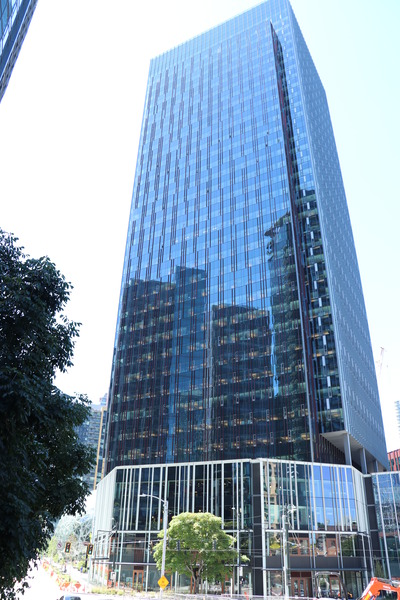
Picture: Amazon Headquater
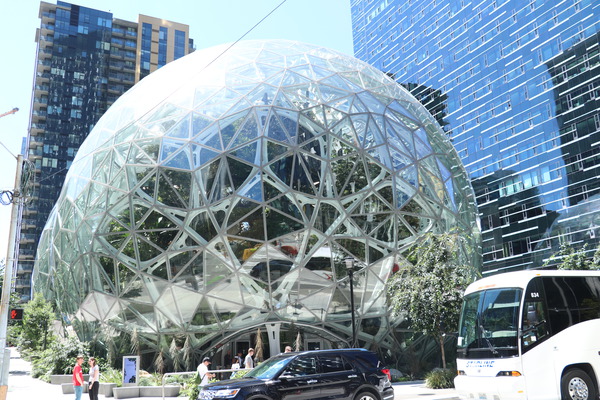
Picture: Sphere

Picture: two Spheres side by side
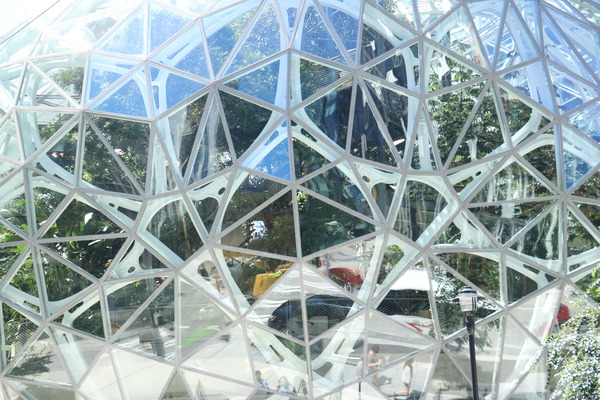
Picture: Insight - at least a little bit
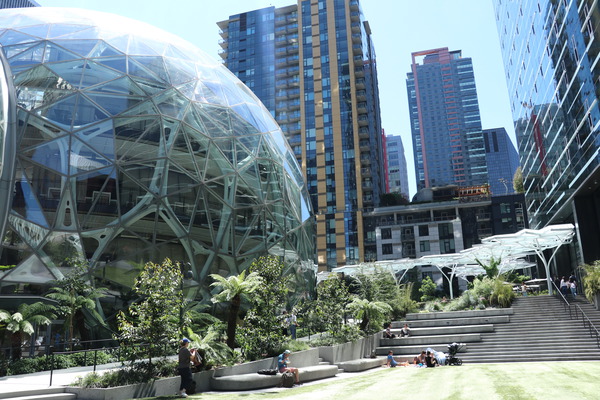
Picture: Planting around the Spheres; right the artificial turf, quite a shame spot
They are largely closed to the public (except for sightseeing tours) and are obviously intended to provide Amazon employees with a biophilic atmosphere in order to facilitate creative thinking. As plant producers we are waiting for the moment when parks or spheres will be set up at every Amazon logistics centre...
What was most impressive for me was a new open-air mall in the university quarter of Seattle: this shopping centre is clearly defined by the plants and plantings that create a life-affirming atmosphere and enable pleasant and organic shopping.
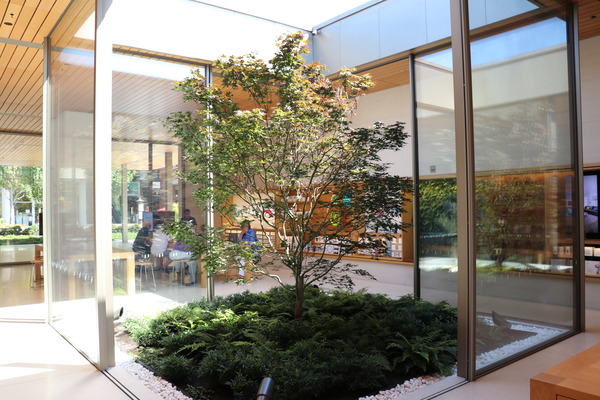
picture: even in the Applestore there is a tree, outside with access to the sky
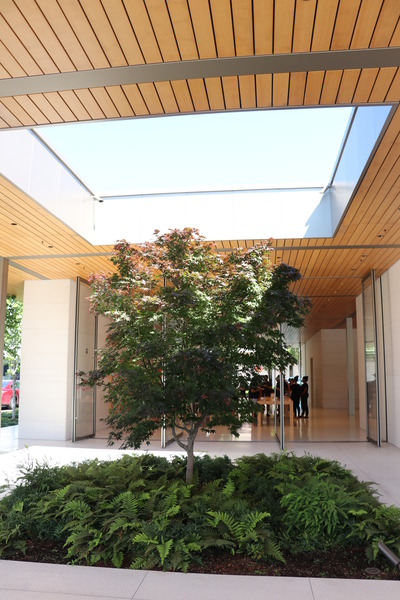
Picture: the second tree in the Applestore

Picture: Planting at the parking lot
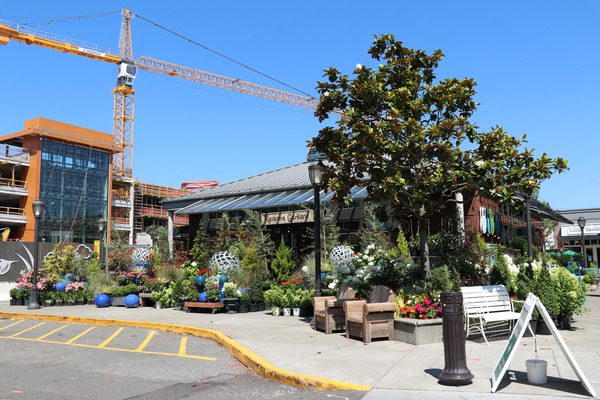
Picture: A small plant center in the mall
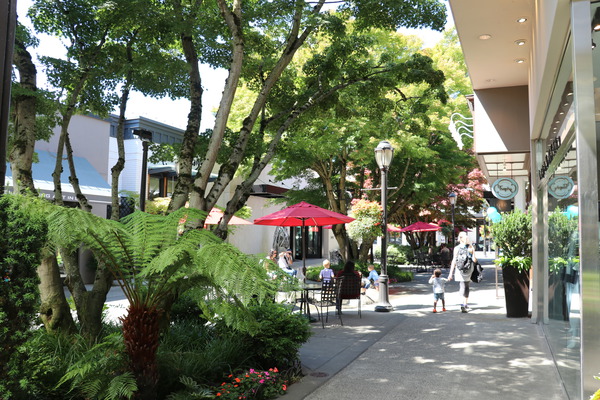
Picture: Planting of the shopping streets
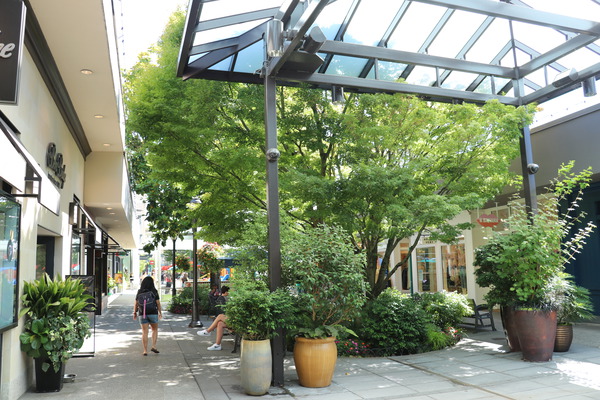
Picture: shopping streets

Picture: Benches in the Mall
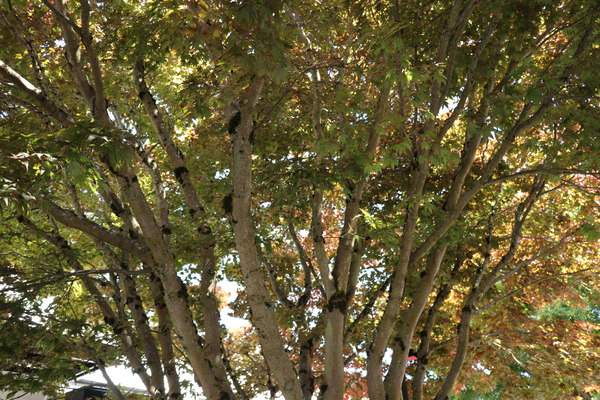
Picture: View from the shopping paradise into the trees and into the sky
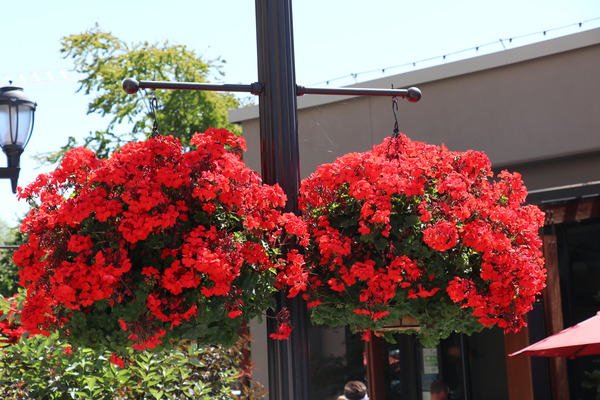
Picture: Hanging Baskets
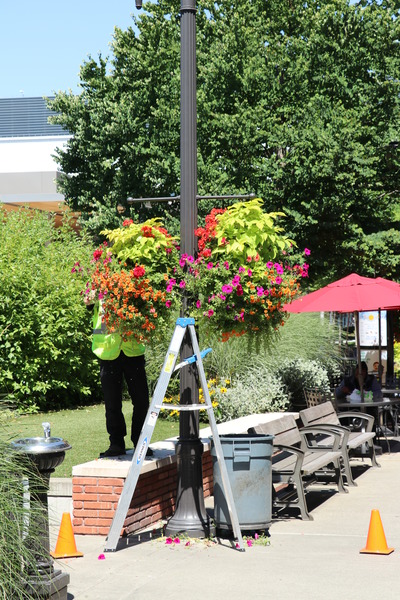
Picture: Hanging Baskets with gardener

Picture: The plants steal the show from the shop windows
Do plants promote consumption? In any case, they had exactly this effect on me, although I am basically a person who does not like to shop. As I could find out from a local gardener, there are four to five full-time gardeners working in the mall with an estimated 100 shops. Unfortunately – according to my conversation partner – the hanging baskets could not be cleaned every week, but only every second. Also not quite so bad...
